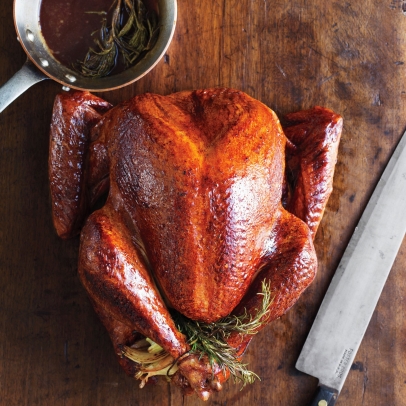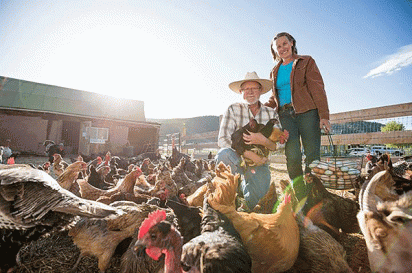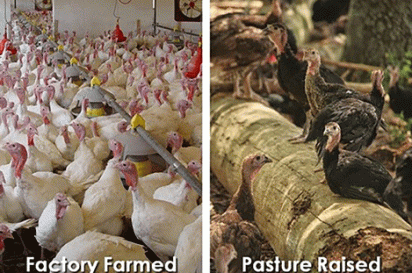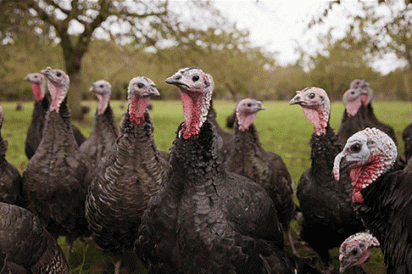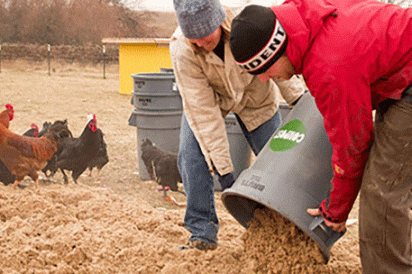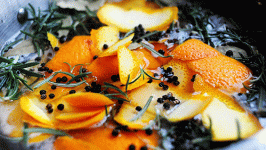Talking Turkey: Why It's Worth Investing in a Pasture-Raised Bird
(This story is adapted from an article by Laurel Miller that ran in the Nov/Dec 2009 issue of Edible Seattle, entitled “Grown Happy”)
It was Washington State farmer George Vojkovich who told me, “Turkeys are not as dumb as people think. They retain the characteristics of a bird, and have the need to develop their natural instincts. Raising any animal penned shoulder to shoulder doesn’t permit that.”
Vojkovich raises pastured poultry with his wife, Eiko, on Skagit River Ranch. He was the first small-scale turkey grower I’d ever visited, but since relocating back to Colorado in 2012, I’ve had the opportunity to see how our regional farmers and ranchers humanely raise their birds, as well. In fact, one of the first times I met Brook and Rose LeVan of Carbondale’s Sustainable Settings, it was to interview them for a 2008 Edible Aspen story that featured, in part, their heritage turkeys (Royal Palms and Narragansetts; the term “heritage” refers to non-industrial breeds that are crucial to maintaining genetic diversity amongst the species).
All domesticated turkeys are descended from wild turkeys, which are indigenous to the Americas. According to the American Livestock Breeds Conservancy, turkeys began to be hybridized for larger size and breast width in the 1920’s, which led to the development of the Broad Breasted Bronze in the ‘50’s. The Broad-Breasted, or Giant, White—today the most popular commercial variety—we developed in the 1960’s to meet customer demand for a similar bird with less visible pinfeathers, for a more attractive final product. Unlike heritage breeds, the commercial birds are genetically unable to mate and require artificial insemination for reproduction.
Turkeys raised under intensive farming conditions are administered prophylactic antibiotics because disease is rampant in such crowded, stressful living conditions. Although hormone use in the poultry industry has been prohibited by federal law for over 40 years, commercial birds are routinely fed growth promotants (usually low-levels of antibiotics) to help them reach their slaughter weight more quickly.
Arsenic is also a common feed additive, used to produce pinker meat and promote growth, as well as for parasite control. During processing, birds are often injected with solutions to plump the meat and make it more flavorful. The National Turkey Federation states that hens are processed at 14 weeks of age and 15 pounds, while toms take 18 weeks to reach their 33 pound processing weight.
The Vojkovich’s Giant Whites are vastly different from the average Butterball. Because they receive no growth stimulants, the birds take six months to grow to their slaughter weight of 12 to 20 pounds (similarly, Silt turkey farmer Gordon Daniels’ pastured turkeys feast on wild acorns, which add fat and flavor to the meat. He slaughters the toms at three to four months, when they’re between 25 to 30 pounds, and will halve them for customers—he notes that many of them like to roast one half and grill the other because the meat is so tender).
The Vojkovich’s purchase day-old, mail-ordered poults from a hatchery, and keep them in a brooder—a small, heated enclosure—until they have enough feathers and are big enough to go into the field at approximately eight weeks of age. Smaller than that, and the young birds can die of exposure or predation from coyotes. Here in Colorado, we have similar predation issues, which is why some farmers use guard dogs to protect their flocks.
Like our local turkey growers—in addition to the LeVan’s and Daniels, there’s Kevin and Gina Long of Silt’s Green Pastures Country Farm—the Vojkovich’s raise their older birds in pasture, where they roam free during the day, at night returning to roost in a mobile turkey house, which can be towed for rotational grazing.
A pastured turkeys’ diet is a combination of foraged bugs and decaying plant matter, native grasses, and supplementary grain (Daniels uses high-protein spent grain from Roaring Fork Beer Company; the Long’s use non-GMO grain for their heritage birds). Turkeys eat up to 30 percent of their diet in foraged vegetation, but they’re also fond of compost in the form of rotting leaves and vegetation often found beneath trees. Because birds are unable to sweat, a process that helps to expel biological toxins and waste product from their bodies, they forage on carbonous matter, which runs through their gastrointestinal tract, which acts as a filter.
It may be too late to splurge on a local, pastured turkey this year (the LeVan’s waiting list is usually full by March, as they only raise a limited number of birds, but it’s never too early to start thinking about next year). The Daniels still have turkeys available for Thanksgiving and Christmas—to order, call 970.945.6072. Green Pastures Country Farm has turkeys available for Christmas; to order, call Gina at 970.618.7237.


